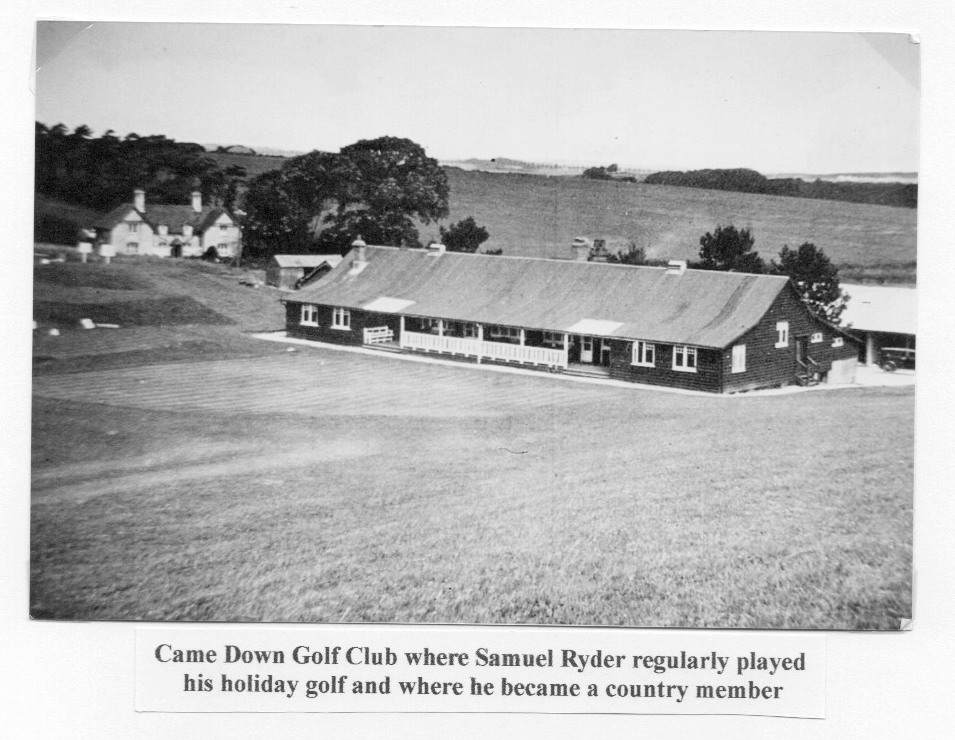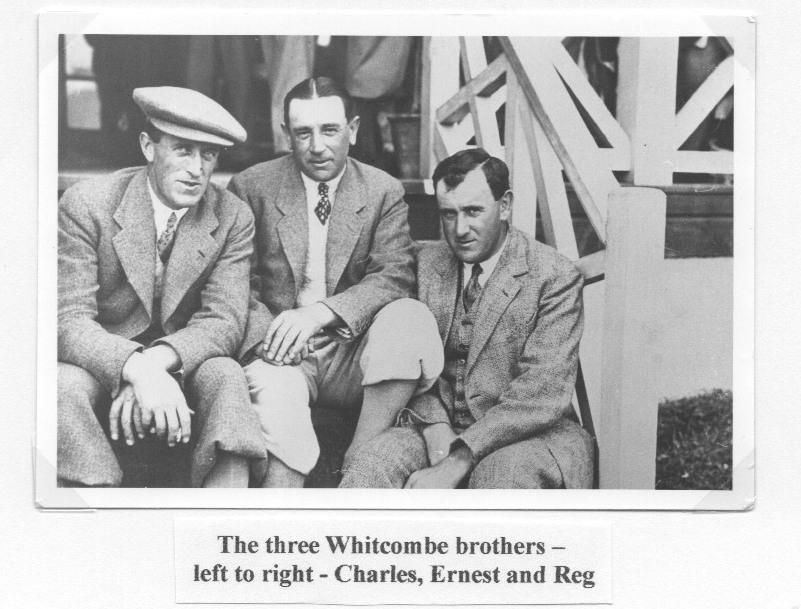Origin of the Ryder Cup
by Peter Fry – Samuel Ryder Biographer
Author’s note: When I heard that my home golf club of Came Down was researching its past in order to produce a book on its history, I offered to assist the project. My role was as a roving reporter and an important part was interviewing Samuel Ryder’s daughter, Marjorie, about the family’s holidays in Dorset. She particularly mentioned the family’s close ties with the Came Down club and, with that happy memory, kindly presented me with a large sepia picture of her illustrious father in mayoral robes which is now hanging proudly in the lounge at Came Down Golf Club. Ever since I realised the significance of Samuel Ryder’s connection with my home club, I have thoroughly researched this most important man of history. – Peter Fry
Origin of the Ryder Cup
There have been various claims as to how the Ryder Cup originated. I wonder to what degree various interested parties have done their homework and produced documented evidence from the year(s) in question to back up their pronouncements. Personally, I like to back up my statements with solid written proof… and, if you bear with me, the tale is a fascinating one.
We know for sure that, when players from Great Britain and America participated in the 1921 Glasgow Herald Thousand Guineas Tournament, there was a last-minute international match arranged. In this fixture at Gleneagles, the British side defeated the Americans by 9 games to 3 with three matches halved. However this match was a one-off informal event, not recognised as an official PGA fixture and with no planned repeat.

Origin of the Ryder Cup
The initial motivation of the idea for the Ryder Cup matches occurred when Samuel Ryder, the well-known seed merchant from St. Albans, regularly took his family to Weymouth in Dorset for their holidays. There his family enjoyed the beach whilst Ryder daily drove the five miles out to the golf course on Came Down known as the Weymouth, Dorchester & County Golf Club before its name change in 1924 to Came Down Golf Club. Ryder became a country member and was impressed by the fine play of the Whitcombe brothers, Ernest, Charles and Reg, who operated the professional’s shop at the club.
Ryder’s eldest daughter, Marjorie, takes up the story at this point in her privately printed booklet entitled ‘The Ryder Family’, which I possess, signed by her. She writes (and I quote precisely): ‘Father enquired of Ernest Whitcombe if he entered the important contests, even The Open? Ernest said “no”, he couldn’t afford it. If he was away, he wasn’t paid for those days by the club. “And”, he said, “I’d probably have to walk there as travel costs so much. The Americans come over here smartly dressed and backed by wealthy supporters, the Britisher has a poor chance compared to that.”
Origin of the Ryder Cup
Marjorie continued: ‘Father considered that something vital was required to rouse golf clubs to take a real interest and responsibility in encouraging any young ‘pros’ who showed promise, such as the Whitcombes at Came Down. He consulted his friends Abe Mitchell and George Duncan and together they discussed the question of the poor support given to British pros, and the idea emerged for some important contest to be set up, to be played solely between Britain and America. Father provided the gold cup, beautifully designed and bearing on top the figure of a golfer based on a photograph of Abe Mitchell. So was born the Ryder Cup.’

Origin of the Ryder Cup
Marjorie used much the same wording in her 1976 letter printed in the Daily Telegraph . I separately possess a note in Marjorie’s own handwriting which categorically endorses the same initial idea for the Ryder Cup matches. Additionally, I possess a signed letter and a ‘Hampshire Golf’ article both confirming the same initial idea for the Ryder Cup from one of Ryder’s caddies at Came Down during the 1920s, Walt Matthews, who went on to become the PGA professional at the Royal Winchester club. Marjorie’s youngest sister, Joan, also sent me a handwritten letter recalling her father’s enthusiasm for the Whitcombes at Came Down. Later, during the autumn of 1926, Ryder twice brought Abe Mitchell to play exhibition and friendly golf with Reg Whitcombe which is reported in some detail in the local Dorset press.
The next stage in the lead-up to the founding of the Ryder Cup matches occurred at Samuel Ryder’s home club of Verulam, in St Albans. There Samuel Ryder and his brother James staged seven golf events with well-known golf professionals of the day to promote one of their businesses, namely Heath & Heather, a herbal remedy firm.

Origin of the Ryder Cup
The second one of these matches at Verulam, in June 1924, featured a challenge match between Abe Mitchell and Charles Whitcombe (won by Mitchell). The report of the match in the Herts Advertiser quoted Samuel Ryder at the prize-giving as saying, ‘Messrs. Heath & Heather were contemplating challenging the Americans who were coming over, and, if that challenge was issued, and accepted, Mitchell and Whitcombe would be asked to be in the English team.‘ An interesting comment indicating what was in Ryder’s mind at the time.